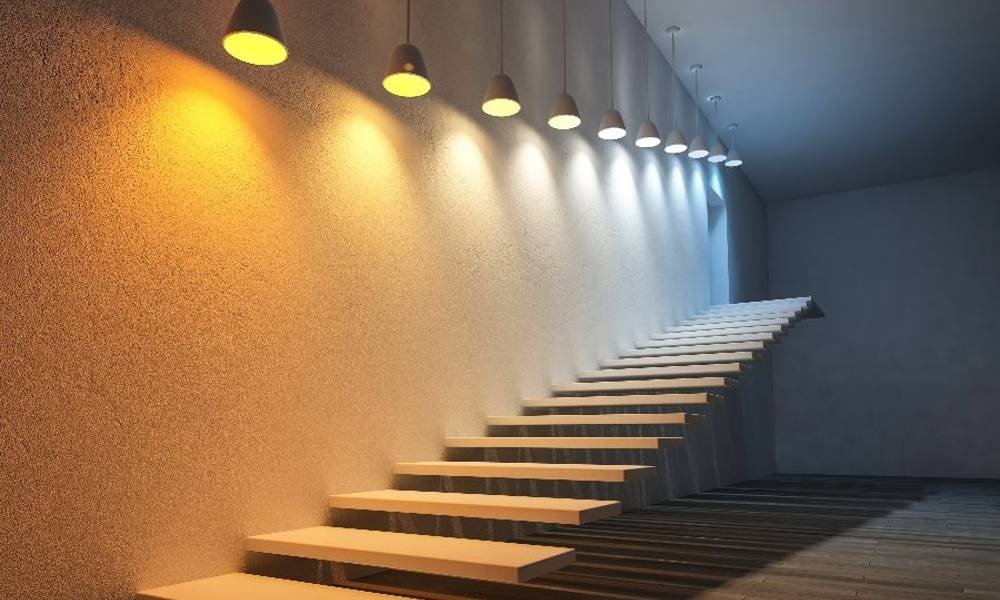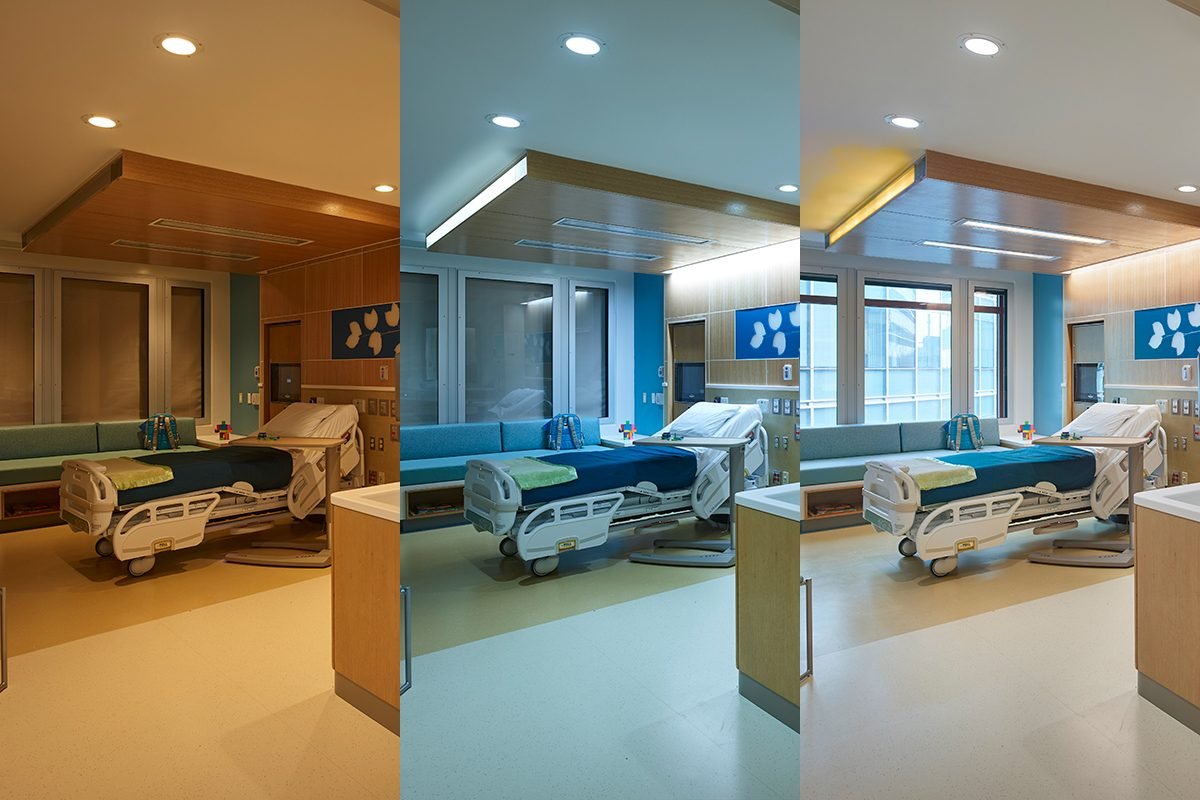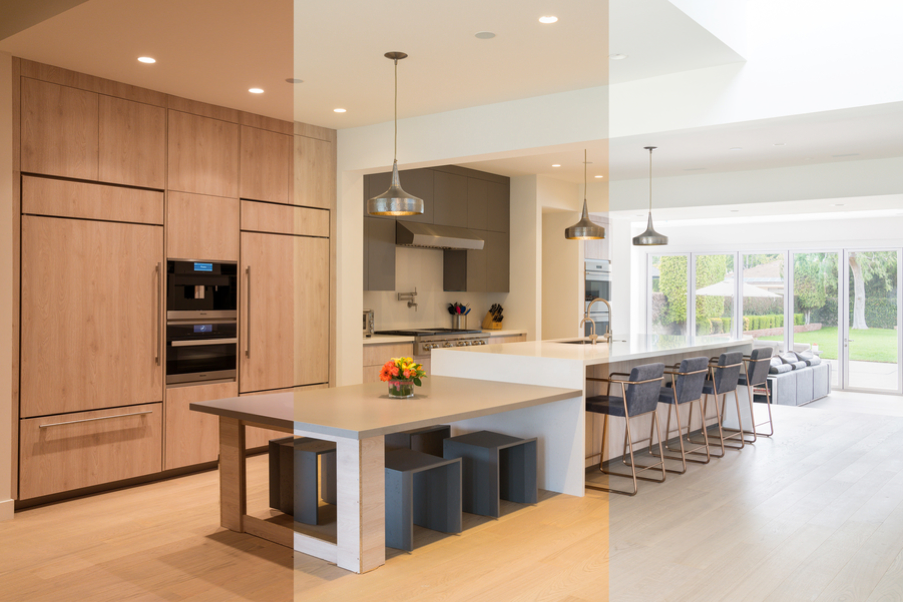If people feel happy, comforted, and productive in a space, then it ticks all the boxes of what a good interior design should be. However, creating such holistic spaces needs the optimisation and careful selection of various design elements such as furniture, decor, and lighting.
Speaking of the latter, illumination plays a significant role in elevating the quality of a space. For instance, think of a beam of sunlight peeking through the clouds on a gloomy day. Now, doesn’t that make you cheerful? Well, that is the power of light- turning a lousy day into a vibrant one. And the circadian rhythm is a concept that can help you to take this experience a notch higher.
What is the Circadian Rhythm and How Does it Relate to Interior Lighting?
The circadian rhythm is a natural, internal process that regulates various bodily functions over a 24-hour period. It is influenced by external factors, primarily light and darkness, that synchronise our internal body clock with the day-night cycle.
Lighting is a significant factor that affects the production of melatonin, a hormone that evokes sleepiness. Exposure to bright light during the day helps maintain a healthy circadian rhythm by signalling the body to stay awake and alert. Conversely, exposure to dim lighting in the evening stimulates the production of melatonin, facilitating a transition to the sleep phase.
In the context of interior lighting, understanding and mimicking the natural variations in light intensity and colour throughout the day can help optimise circadian health. It can promote a balanced sleep-wake cycle for occupants in indoor environments. Incorporating indoor lighting solutions that simulate natural daylight patterns can positively impact the productivity, mood, and overall well-being of occupants.
How is Circadian Lighting Beneficial for Interior Spaces?
Circadian lighting is one of the most effective ways to enhance the character of an indoor space. Let’s have a look at some of the key benefits of incorporating this concept in any interior design.
Regulated Sleep Patterns
By using cooler, bluish light during the day and warmer, reddish light in the evening, circadian lighting helps to reinforce our natural circadian rhythm. This can enhance the quality of our sleep, making us more alert during the day and improving our overall health.
Enhanced Mood and Well-being
Properly designed circadian lighting can positively impact on our mood and mental well-being. Exposure to bright, cool-toned lighting during the day can boost alertness and productivity. Conversely, transitioning to warmer, softer lighting in the evening creates a relaxing ambience, preparing us for a restful night’s sleep and promoting relaxation.
Increased Productivity and Performance
Incorporating circadian lighting is particularly helpful in workspaces to enhance productivity and performance. Studies have shown that individuals exposed to circadian-aligned lighting during working hours experience improved concentration, efficiency, and overall job satisfaction. This lighting design can positively influence cognitive function, supporting better decision-making and problem-solving skills.
Health and Circadian Disorders Management
For individuals with circadian rhythm disorders or those affected by irregular sleep patterns due to shift work, circadian lighting can be a game-changer. Tailored lighting solutions can help manage these conditions by assisting in syncing their internal body clocks to the desired schedule, mitigating the adverse effects on their health.
Aesthetically Pleasing Design
Beyond its physiological and psychological benefits, circadian lighting can enhance the aesthetic appeal of interior spaces. The ability to adapt the lighting to different times of the day allows for a dynamic and visually pleasing environment that complements the architectural design and purpose of the space.
How to Incorporate Circadian Lighting in Your Interior Design?
If you’re eager to infuse your interior spaces with the benefits of circadian lighting, mentioned below are some cues you can use to your advantage.
Select Circadian-Friendly Light Fixtures
Invest in light fixtures that are designed to mimic the natural variations of light. Look for LED lights that allow for adjustments in colour temperature and brightness. Spectrally-optimised LEDs are a good start. These fixtures can provide cooler, brighter light during the day and transition to warmer, softer light in the evening.
Design Lighting Zones
Divide your space into different lighting zones based on the activities that occur in those areas and the time of day. For example, use bright, cool lighting in areas where work or activities requiring focus take place during the day. You can transition to warmer, dimmer lighting in areas where people unwind and relax in the evening.
Utilise Automated Lighting Controls
Incorporate automated lighting controls to seamlessly transition between lighting zones and mimic the natural light cycle. Utilise timers, sensors, or smart lighting systems to adjust the colour temperature and brightness automatically. These controls can ensure a gradual and smooth transition throughout the day, supporting the body’s circadian rhythm.
The harmony between light and our natural biological rhythms holds immense potential to redefine how we experience and interact with the spaces we inhabit daily. The concept of circadian rhythm offers us the opportunity to design with a deeper appreciation for the human-centric approach, where the play of light enriches our lives in every conceivable way.










